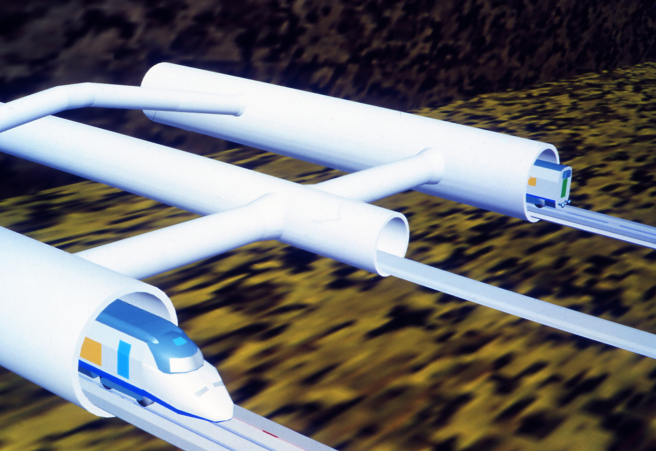The numerous challenges currently facing the Pedro Sánchez government in the area of infrastructure are not preventing it from moving forward with its long-term strategic projects. A prime example of this is the planned tunnel connecting Spain with Morocco, and thus Europe with Africa.
This week, the Ministry of Transport, under the leadership of Óscar Puente, decided to allocate over €350,000 from the European Next Generation Fund for a feasibility study to explore possible financing alternatives for this project. This initiative was prompted in recent months by the revival of contacts between the two governments, after decades of unsuccessful investment and research efforts.
The new Spanish government contract, led by the public company Ineco, concretizes the general mandate of a preliminary project: It aims to define profitable models for the construction of the infrastructure, which would require billions of euros in investments.
References include the Figueres-Perpignan high-speed rail project between Spain and France, managed by public companies, and the Channel Tunnel between France and the United Kingdom, built and operated under the concession of a private company currently owned by groups such as Eiffage and Mundys (formerly Atlantia).
As part of the feasibility study, Ineco will also conduct a demand analysis to project passenger and freight flows. A functional study will also be prepared to examine the various infrastructure alternatives and define the alternatives: two are expected: one with a terminal near Algeciras and the other near the coast of Tarifa, towards Cádiz.
Finally, Ineco’s team of around a dozen people will conduct a study on the financial viability of the alternatives. This study will be based on user revenue forecasts and the availability of financial aid from the European Union. In short, both the costs and potential returns on both sides of the hypothetical tunnel will be considered.
“The cash flows include revenue from railway tolls for transport from the destination to the freight and passenger terminals on both sides of the tunnel, as well as revenue from established through services and other components of railway traffic subject to tolls under Spanish and Moroccan railway laws at the terminals, tunnel stations, or other interconnected dependent services. This also includes revenue from commercial activities at the terminals/stations, revenue from electrical connections, or businesses connected by fiber optics,” the document ordering the tunnel to Ineco states.
Herrenknecht is investigating construction feasibility
The German company Herrenknecht, a global leader in tunneling solutions, is currently working on a feasibility study for the construction of the infrastructure, which is scheduled for completion in June. This study was commissioned by the Spanish government through the Spanish Society for Studies on Fixed Communications through the Strait of Gibraltar (Secegsa) by the end of 2024.
Herrenknecht’s work will address “the feasibility of excavating the breccias—the most critical section of the tunnel, which will be drilled by the tunnel boring machine (TBM) along the Kamarin Sill—and will review the considerations of the 2007 preliminary project regarding the construction method and the flysch formations,” Secegsa reports.
The German company’s study will be complemented by feasibility studies conducted by Ineco itself, which will present two physical and financial feasibility reports this summer.




